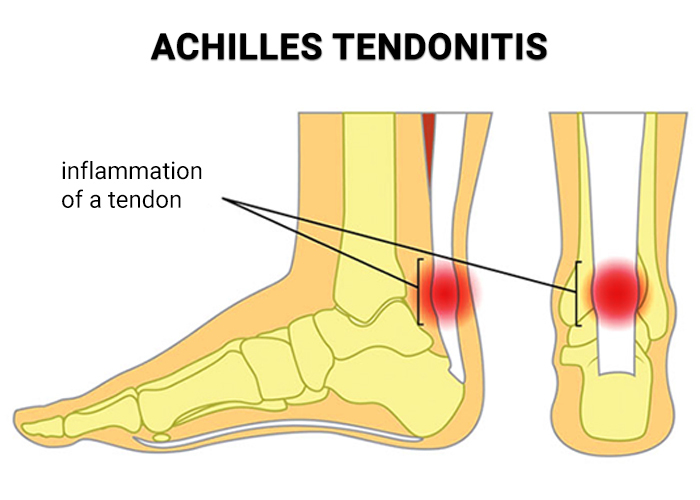Although Achilles is not a medical term, you see that it is often used to describe the swelling and pain at the bottom of the foot. The term Achilles refers to weakness or vulnerability and is rooted in a myth from Greek mythology. Achilles Heel is an injury due to the overuse of the Achilles tendon, the band of tissue that connects calf muscles at the back of the lower leg to your heel bone.
Most cases of Achilles Heels could be treated at home under the doctor’s supervision, but if the pain is unbearable then one should seek medical help immediately.
Symptoms
You might start experiencing mild aches in the back of the leg or above the heel after running or other physical activities. The pain might be severe after running, sprinting, or climbing stairs. Bone spurs in the heels are also a symptom.
Swelling and tenderness in the heels during the morning are seen, which would typically go away after walking or stretches.
Call the doctor immediately if you hear a pop sound and experience sudden pain in the back of your leg or heel, which could mean that the tendon has torn.
Causes
A most common cause is the overuse or repetitive strain on the tendon. Achilles tendinitis is commonly seen in men. It might be caused due to worn-out shoes or colder weather. Obesity or a tight calf muscle also increases the strain on the tendon. People with psoriasis or high blood pressure are more likely to have this.
How to treat your Achilles heels?
The treatment depends on how bad the injury is. Some ways are:
-
- Rest. It is important to have good healing with reduced stress on the heel.
- Taking pain relievers could help get a temporary break from the agonizing pain.
- To decrease swelling and aches apply an ice pack for about 15 minutes when you experience pain.
- Using the RICE method: Rest, Ice, Compression, and Elevation can help with healing the underlying injury.
- Wearing footwear with softer heels reduces pain while walking. Wearing a walking boot or orthotic shoes also helps by taking some of the stress off the Achilles heels so they can start to heal.
- A system of exercises that help strengthen your calf muscles to take the pressure off your tendon can be performed.
- You can visit an orthopedic doctor or try out physical therapy.
- If the pain is severe, the tendon could be torn which could only heal with the help of certain surgeries. Some types are:
- Surgery that lengthens your calf muscles.
- Debridement surgery to remove damaged tendon tissue and repair the tendon.
- Surgery to remove your damaged tendon tissue, repair the remaining tendon, and give it extra strength by moving another tendon to the heel bone.
It usually takes about three to six months to heal the Achilles heel depending on the severity of the injury, taking ample rest and care can provide a speedy recovery. Follow your doctor’s recommendations and schedule an appointment if pain or trouble moving affects your regular daily activities








0 comments on “Repairing Your Achilles Heels”